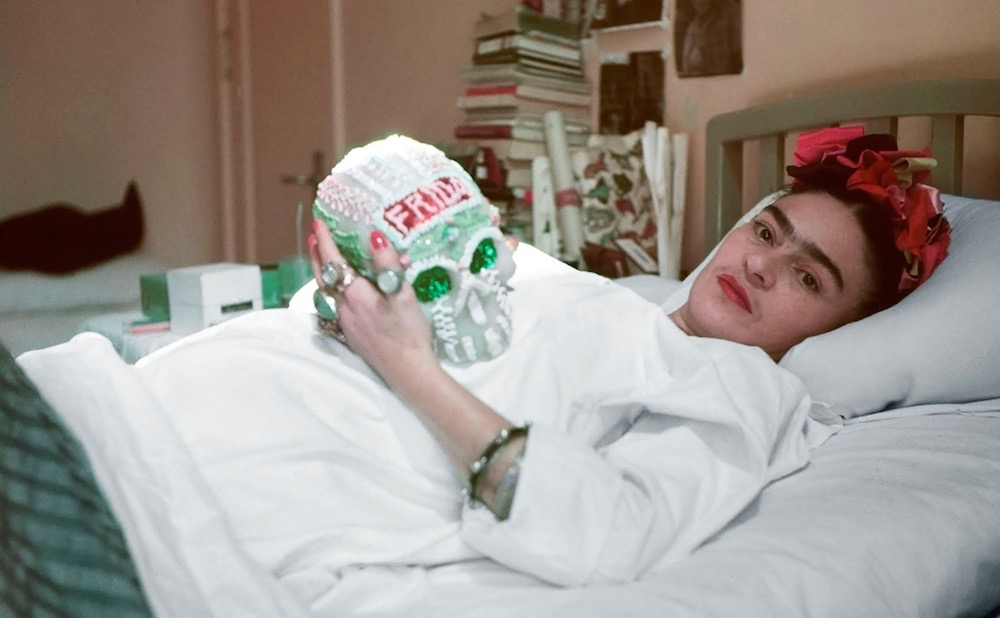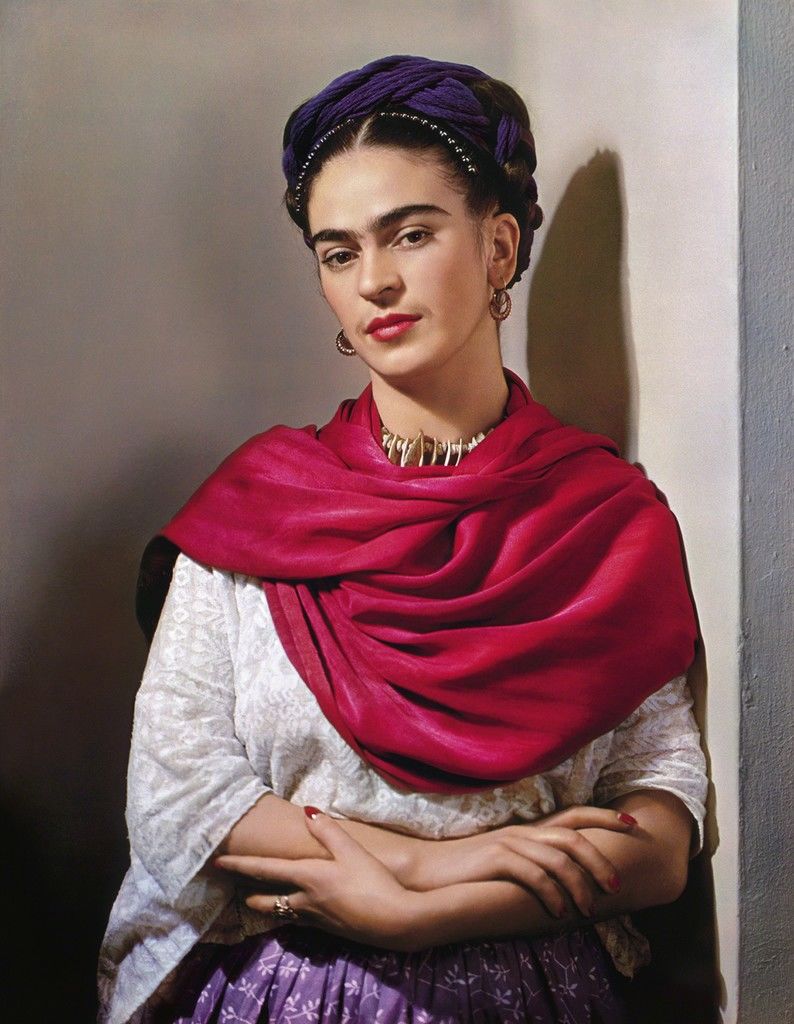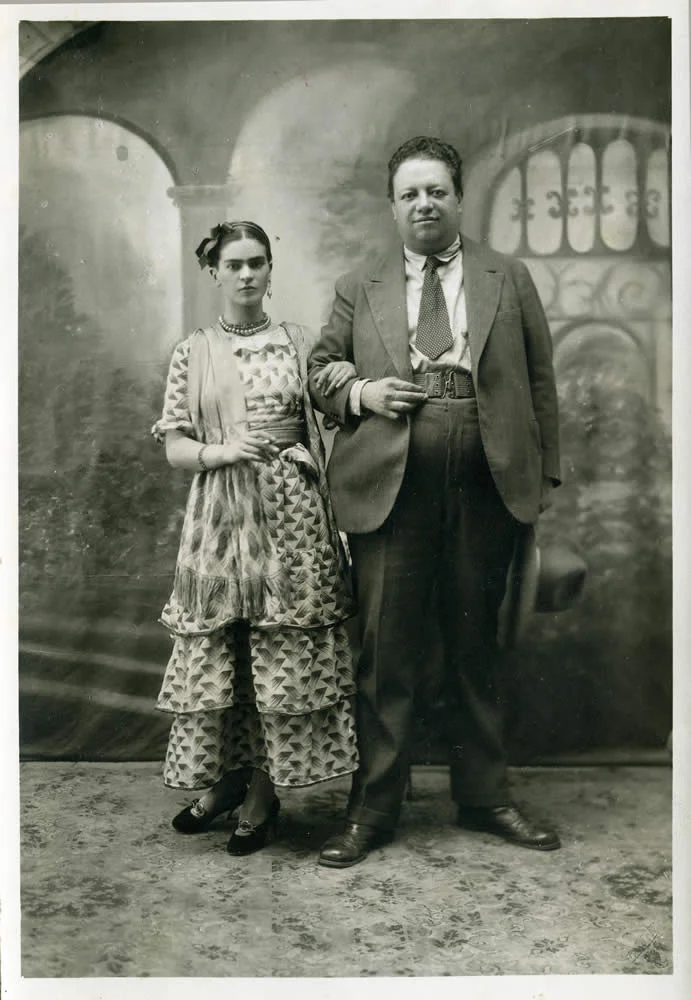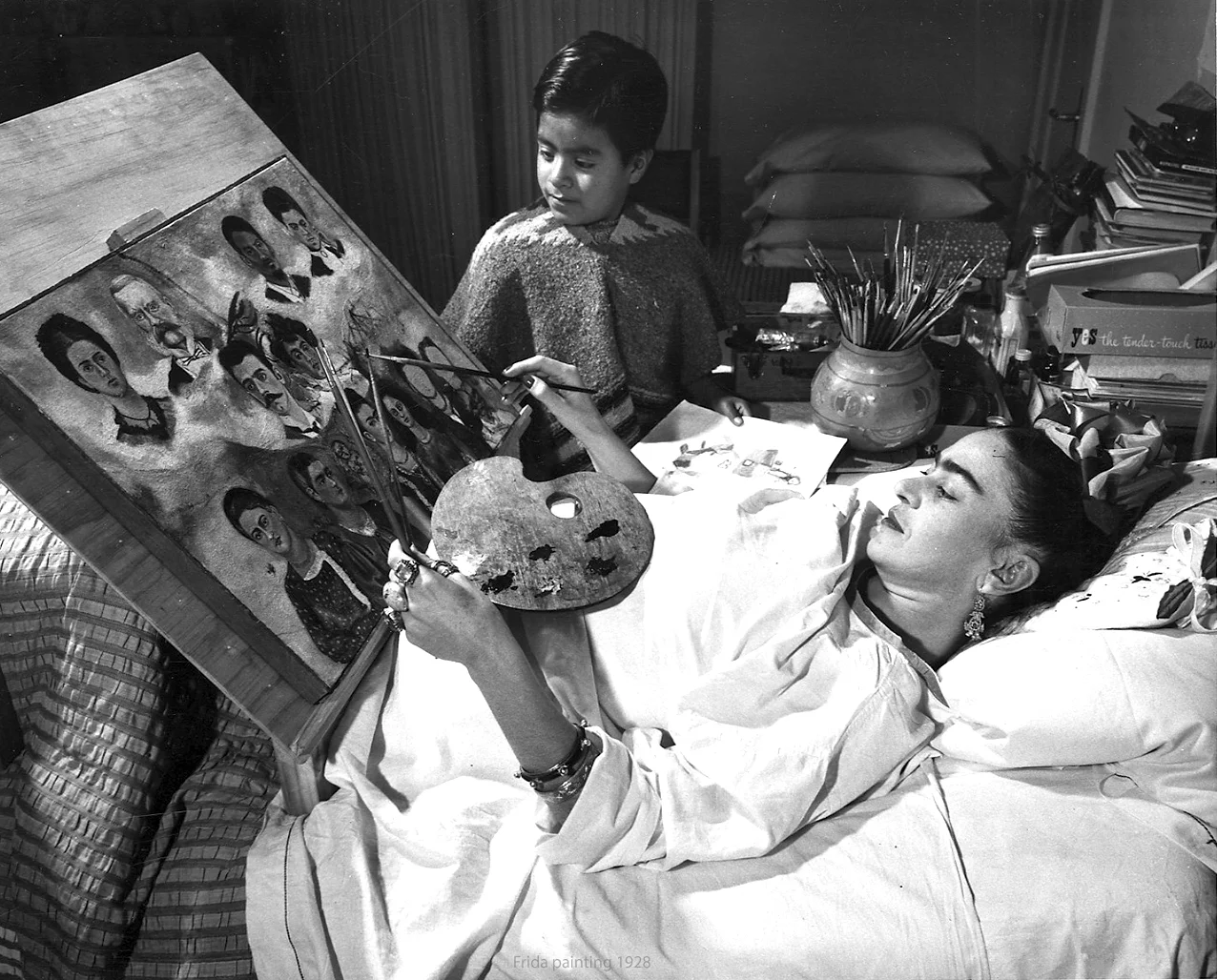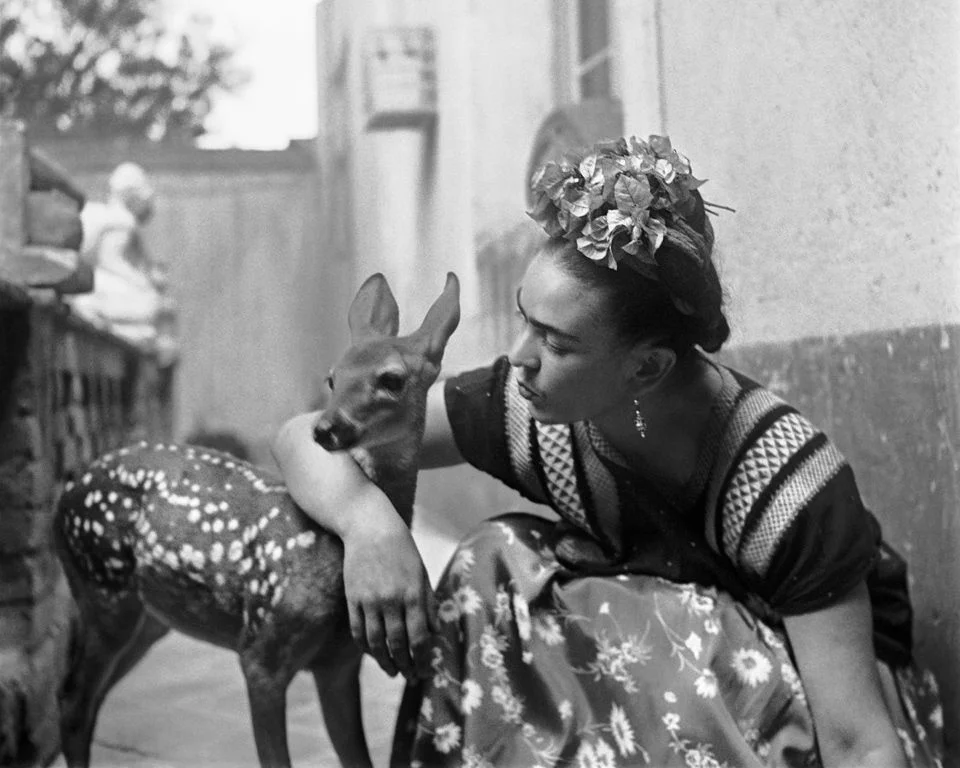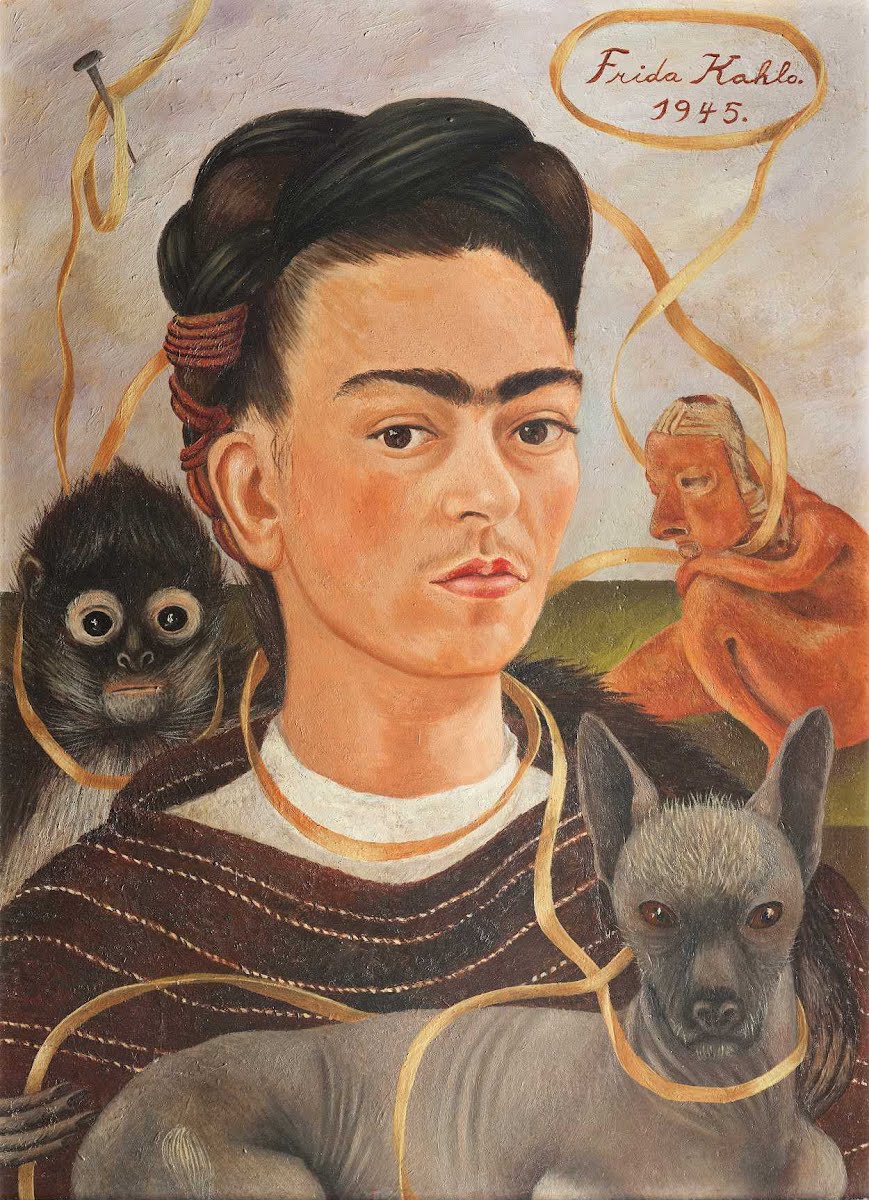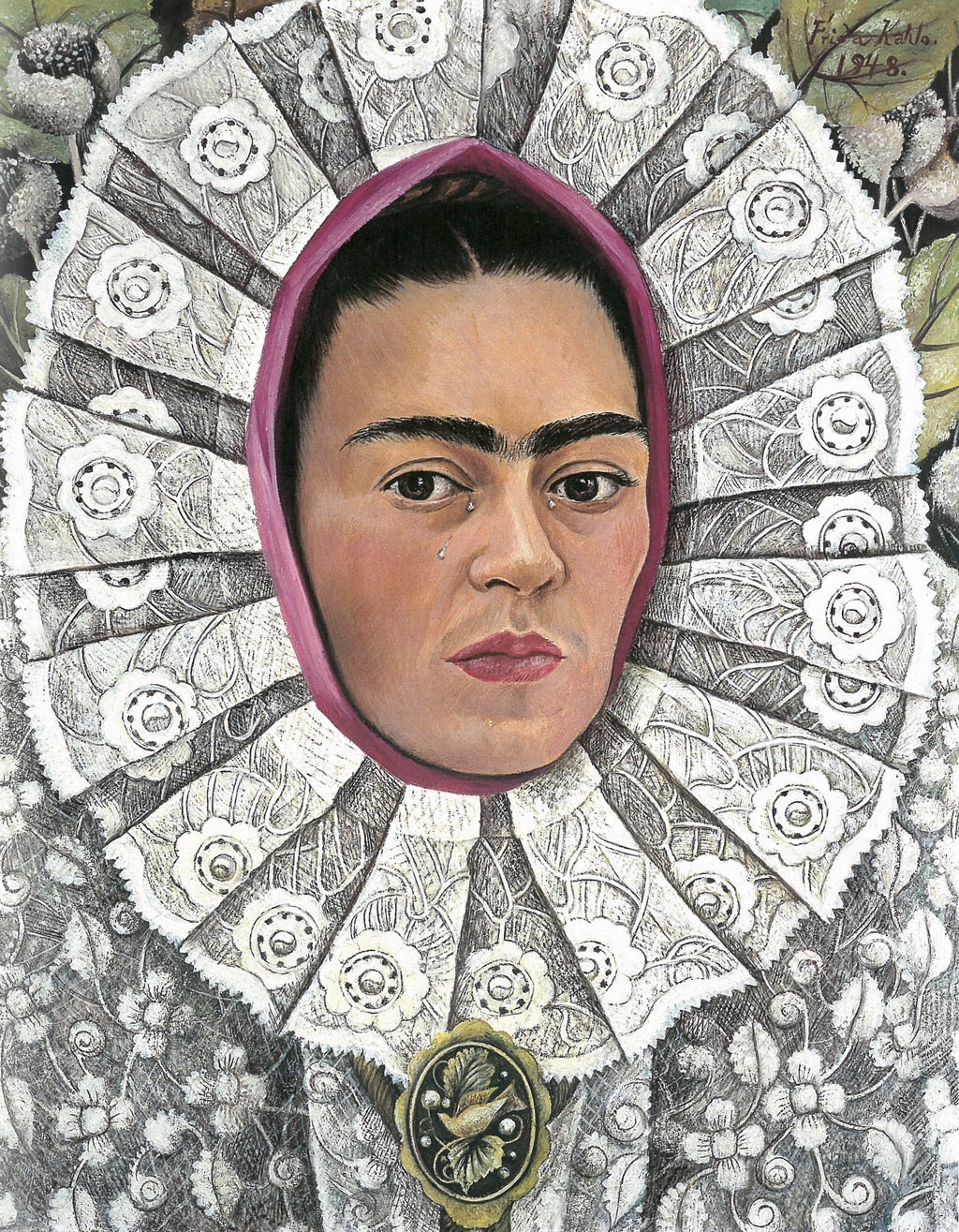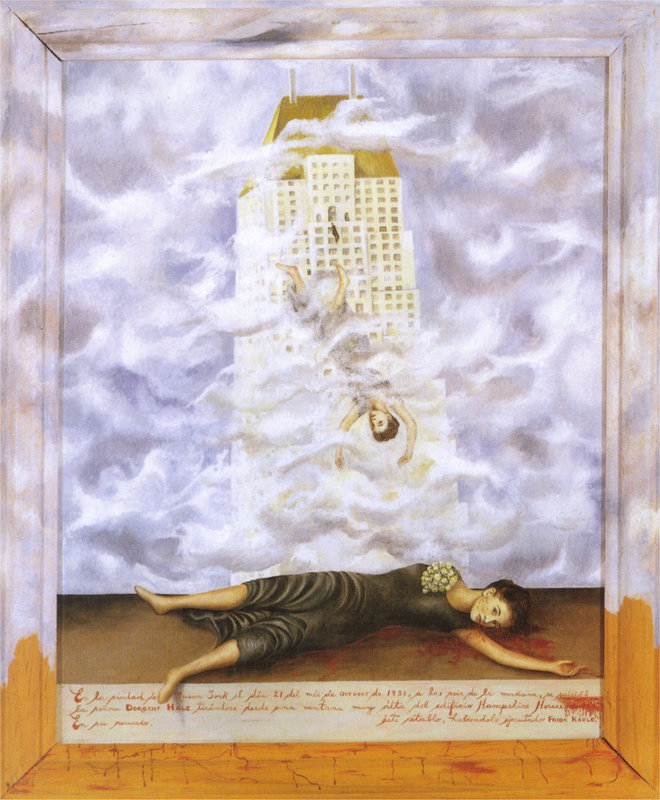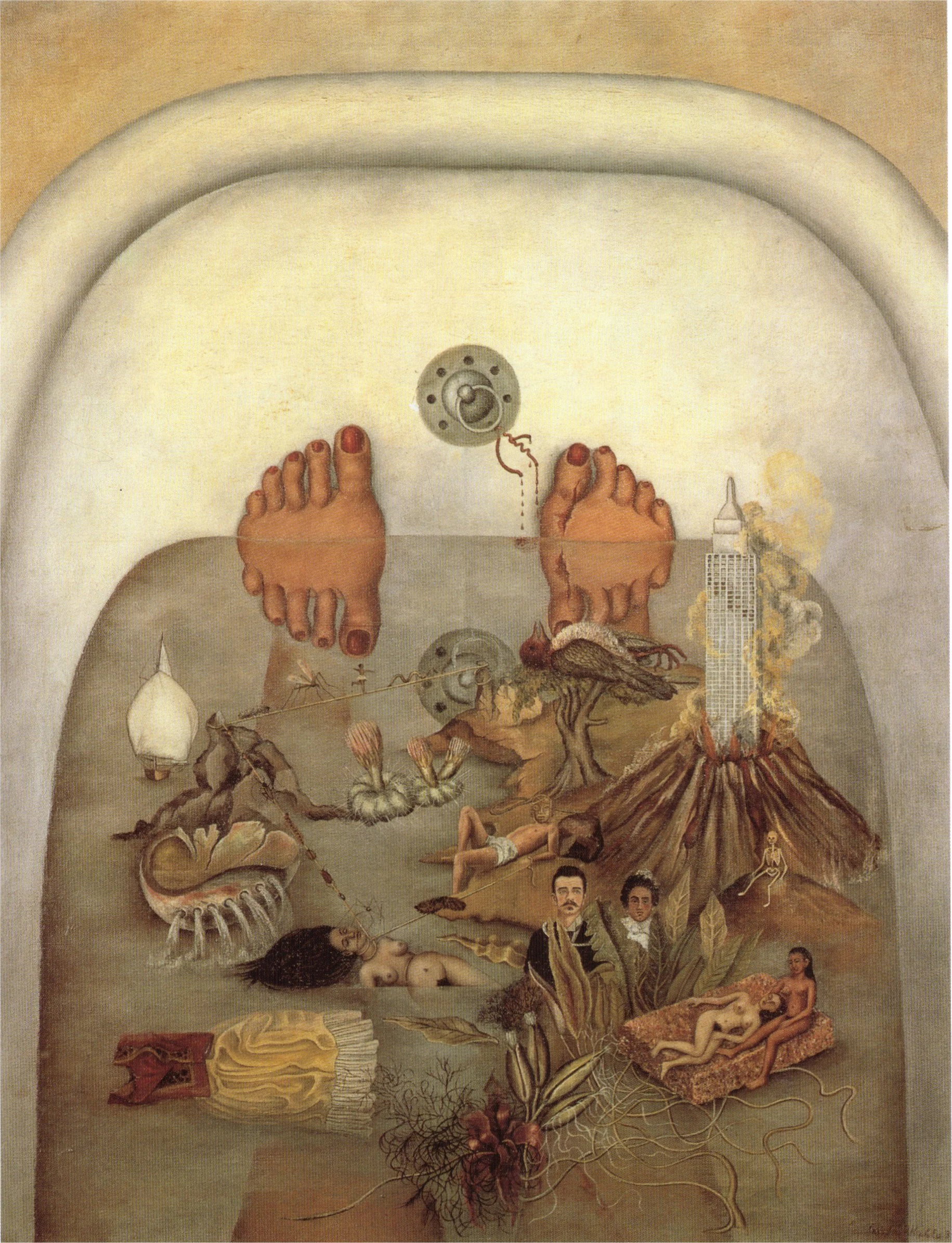Overshadowed by her husband Diego Rivera, Kahlo led a too-short life fraught with pain, which she channeled into her powerful paintings.
A portrait of the unusual artist in 1939 by Nickolas Muray
It seems every famous artist is eccentric in their own way, and Frida Kahlo was no exception. She didn’t follow the rules, establishing herself as the negation of what a woman was expected to be. Her singular vision continues to inspire and capture the world’s imagination. Kahlo’s recognizable unibrow, boldly colored clothes and tempestuous marriage to muralist Diego Rivera are as central to her fame as her vivid and powerful self-portraits.
“During the horrific accident, a shower of gold glitter landed on Frida’s bloody and broken body — making the macabre moment like something out of a magical realism novel.
”
While writing my post on the Blue House, or La Casa Azul, Kahlo’s former home, I learned more than a few surprising things. Why nine, you might ask? During their lifetimes, Kahlo and Rivera passionately assembled a collection of fantastical papier-mâché alebrijes, and I’d like to imagine hers as a cat with its metaphorical nine lives. So, without further exposition, here are nine interesting facts you might not have known about Frida Kahlo.
Talk about odd couples! Here’s Wedding Portrait of Frida Kahlo and Diego Rivera by Victor Reyes, 1929
1. She and Diego proved that opposites really do attract.
Kahlo first met Rivera when he was commissioned by the government to paint the mural La Creación at the Bolívar Auditorium of the Escuela Nacional Preparatoria in 1922. Kahlo was one of only 35 females in a student body of 2,000 and belonged to a group of young intellectuals who called themselves Las Cachuchas, named after the peaked cloth caps they wore as a sign of subversion against the rigid dress code of the period. One account claims that she mischievously soaped the stairs leading to the auditorium where Rivera was working, hoping to make him slip and fall.
They met again in 1928 while he was working on a fresco for Mexico City’s Ministry of Education building. With paintings tucked under her arm, she demanded Rivera critique her work, telling him, “I have not come to you looking for compliments. I want the criticism of a serious man. I’m neither an art lover nor an amateur. I’m simply a girl who must work for her living.”
It was a May-December romance, as Rivera was about twice her age (as well as 200 pounds heavier). She was 22, he was 43. He had been married twice before. Kahlo once said, “I suffered two grave accidents in my life: one in which a streetcar knocked me down, and the other was Diego.”
Frida paints Portrait of My Father, 1952, in her studio. Photo by Gisèle Freund
2. A horrific — but strangely beautiful — accident changed the course of her life.
In 1925, an 18-year-old Kahlo was riding a bus home from school with her boyfriend Alex Gómez Arias when it collided with an oncoming electric streetcar. A fellow passenger on the bus had been carrying a bag of gold dust, which was released upon impact and tore, a shower of gold glitter landing on the bloody and broken body of Kahlo — making the macabre moment like something out of a magical realism novel.
When onlookers saw her, they cried, “La bailarina, la bailarina!” mistaking her for a dancer.
The bed-ridden Frida Kahlo painting Portrait of My Family in 1950. Photo by Juan Guzmán
The near-fatal accident left Kahlo bedridden for months and enduring lifelong complications that would fuel her intensely personal artwork, turning her deepest feelings and darkest moments into art.
What a deer! Frida With Granzino, Version 2 by Nickolas Muray, 1939
3. Kahlo wasn’t able to have children, so she filled the void with exotic pets.
Kahlo was a great lover of animals and had an exotic menagerie at La Casa Azul. In many of her self-portraits she is accompanied by her favorite animals, including a pair of mischievous spider monkeys named Fulang Chung and Caimito de Guayabal. She also had Bonito, an Amazon parrot, who would perform tricks at the table for rewards of pats of butter, an eagle named Gertrudis Caca Blanca (Gertrude White Shit), hairless Xoloitzcuintli dogs and a fawn called Granzino.
These animals appeared in her work, including Self-Portrait With Monkey and The Wounded Deer, her face placed atop a deer’s body, probably Granzino’s, complete with antlers, running through a forest as nine arrows pierce its body.
Frida’s love of animals is evident in her Self-Portrait With Small Monkey from 1945
Despite wanting to have offspring, Kahlo was unable to bear children and suffered miscarriages and medical abortions. Her inability to give birth became a source of trauma, and she said that her pets symbolized the children she never could have.
Many of Frida’s paintings were self-portraits, like Autorretrato from 1948
4. She’d most likely beat you in a staring contest.
Kahlo was her own most popular muse. Fifty-five of her 143 paintings are self-portraits, which is perhaps understandable when thinking about how much time she spent on her own while coping with a variety of chronic health issues. Her conjoined brows, plaited hair and watchful eyes fiercely demand that the viewer meet her gaze. And her defiant, upright posture was as much due to the immobilizing plaster corsets she was forced to wear to support her spinal column as it was her confidence.
Kahlo’s use of the intimate self-portrait often reflected her turbulent life and was a visual means to communicate her physical and psychological wounds.
Let’s take some time to reflect upon what an amazing woman Frida Kahlo was. Photo by Lola Álvarez Bravo
5. She was her own brand ambassador.
Our sense of self is largely dependent on where we were born, where our family’s from and the people we choose to surround ourselves with. This was especially true for Kahlo with her distinctive sartorial style inspired by the traditional dress of the Tehuana, the independent and proud indigenous matriarchal Zapotec society in the state of Oaxaca. Kahlo’s mother was born in Oaxaca to an indigenous father and a mother of Spanish descent.
Her attire helped her craft an imaginative, colorful identity and typically included flamboyant rings adorning her fingers, a traditional square-cut blouse, the huipil, and a long wrap-around skirt, which allowed her to mask and distract from her physical injuries.
One can only imagine the sensation of Kahlo’s striking and exotic appearance when she arrived in the United States with Rivera. Her rejection of conventional fashion was unlike anything the people of San Francisco, Detroit or New York had ever seen. On a walk in NYC, a flock of children asked Kahlo, “Where’s the circus?” but she simply smiled graciously and continued walking.
The controversial The Suicide of Dorothy Hale by Frida Kahlo, 1939
6. She pushed boundaries and buttons.
Sometime in 1938, Kahlo was commissioned by Clare Boothe Luce, the writer of the all-female Broadway play The Women and a former managing editor of Vanity Fair magazine, to paint a recuerdo, a remembrance portrait of their mutual New York socialite friend and aspiring actress Dorothy Hale, who had recently taken her own life.
Luce presumed Kahlo would paint a conventional portrait of Hale. However, Kahlo wasn’t a fan of what she considered to be the bourgeois capitalist social scene of New York City and had a more cerebral vision in mind — to create a graphic retablo detailing Hale’s moment of death.
In the center of the painting, the building where Hale lived is depicted with its many small windows rising up behind a layer of feathery clouds. A tiny figure plummets from an upper window. In the middle ground is a larger falling figure, clearly Hale, her arms extended and her skirt billowing around her knees. Resting on the pavement in the foreground is the deceased Hale in the black velvet dress and yellow corsage she wore, her dead eyes frozen open and staring at the viewer. As if that wasn’t enough, the inscription literally bleeds into the bottom of the frame and reads, “In the city of New York on the 21st day of the month of October, 1938, at 6 o’clock in the morning, Mrs. Dorothy Hale committed suicide by throwing herself out of a very high window of the Hampshire House building. In her memory, this portrait was executed by Frida Kahlo.”
When Luce received the painting, she seriously considered destroying it, but was persuaded by friends to desist. The arresting and controversial work remained in storage for decades before being donated “anonymously” to the Phoenix Art Museum in 1960.
7. She arrived at her first solo exhibition in Mexico in an ambulance.
Kahlo’s first major solo exhibition was held at the Julien Levy Gallery in 1938 in New York City, and one year later, her works were part of a collective exhibition entitled Mexique, shown at the Galerie Renou et Colle in Paris. The French surrealist André Breton described her art as “a ribbon around a bomb.”
Due to declining health during her final years, Kahlo rarely ventured outside of the Blue House, and had to use a wheelchair and crutches to get around. In April 1953, her first solo exhibition in Mexico opened at the Galería de Arte Contemporáneo. At the time, Kahlo was on bed rest under doctor’s orders and not expected to attend. However, she made sure to be there, arriving by ambulance to a mystified crowd, ordering that her four-poster bed be moved into the gallery. She was brought in on a stretcher to the bed, where she was able to enjoy the event.
8. She made a most memorable exit from life.
Kahlo was transported to the crematorium at the Panteón Civil de Dolores, and her body was lifted out of the coffin and laid in a cart that would carry her along iron tracks to the cemetery. So desperate were people to have a memento of Kahlo that onlookers pulled at the rings on her fingers even as her body moved toward the crematorium fire. Witnesses who were in the small chamber containing the furnace claimed that a sudden blast of heat from the open incinerator doors caused Kahlo’s corpse to sit bolt upright, and when the flames ignited her hair, forming an aura around her face, her lips appeared to part in a grin just before the doors closed shut.
What the Water Gave Me by Frida Kahlo, 1938
9. She was underappreciated as an artist in her lifetime.
Kahlo’s work was largely overshadowed by that of her husband during her lifetime. This was partly because the complexity of her art was difficult for an international audience to categorize. Kahlo’s most famous works, her autorretratos, or self-portraits, combine elements of realism, surrealism and indigenous Mexican symbolism.
Breton, an original member of the Dada group and the founder of the Surrealist movement in 1924, visited Kahlo in Mexico in 1938 while she was working on Lo Que el Agua Me Dio (What the Water Gave Me). Breton was transfixed by it, calling Kahlo a “natural surrealist.” Kahlo rejected the label and replied, “I never painted dreams. I paint my own reality.”
When Kahlo died at the early age of 47 in 1954, Rivera begged his friend and patroness of the arts, Dolores Olmedo to purchase 25 of Kahlo’s paintings for a mere $1,600. He wanted to make sure that an important part of his wife’s work remained in Mexico. –Duke
“A sudden blast of heat from the incinerator caused Frida’s corpse to sit bolt upright. Flames ignited her hair, forming an aura around her face, and her lips parted into a grin just before the doors closed shut. ”
